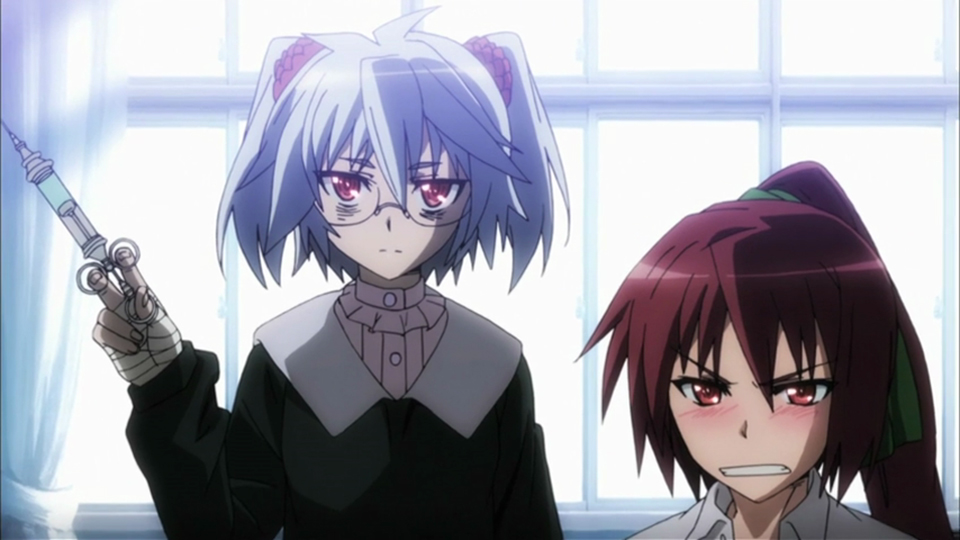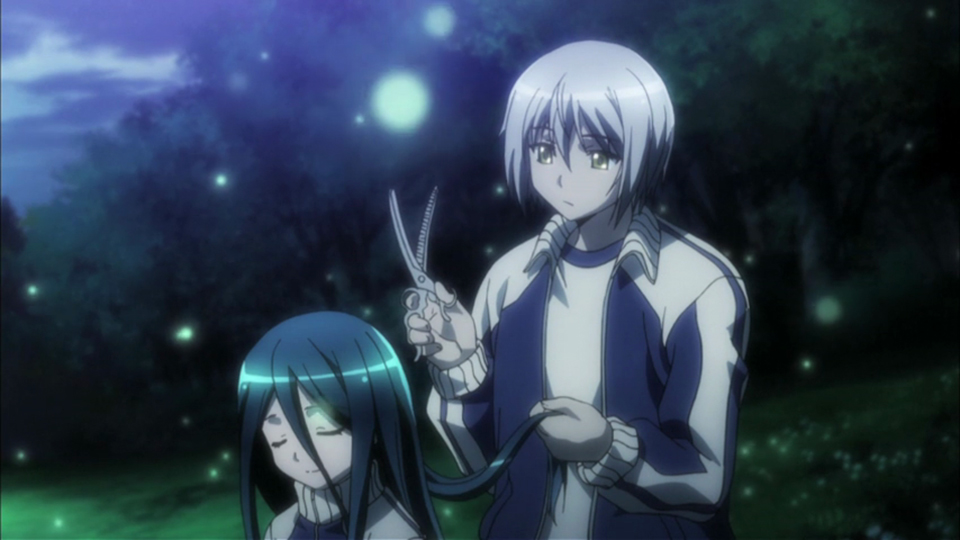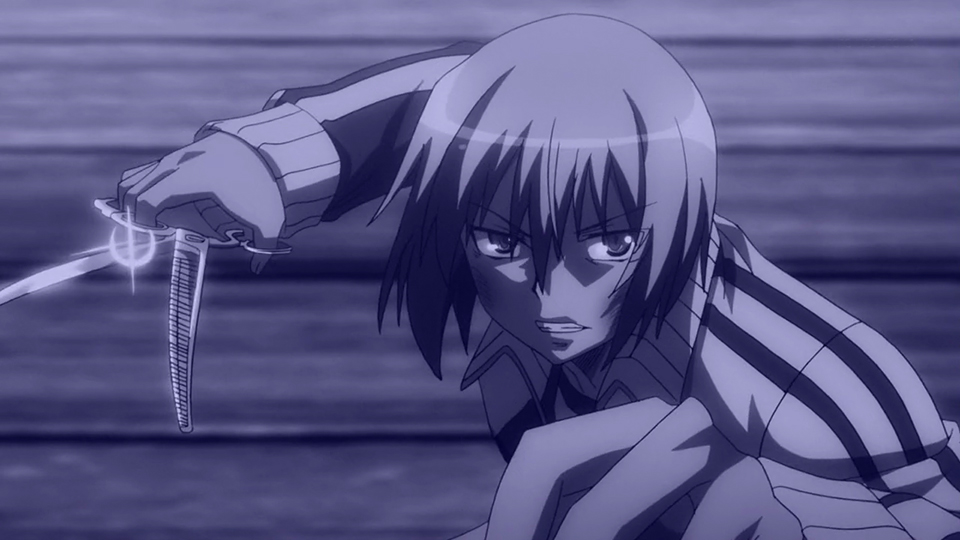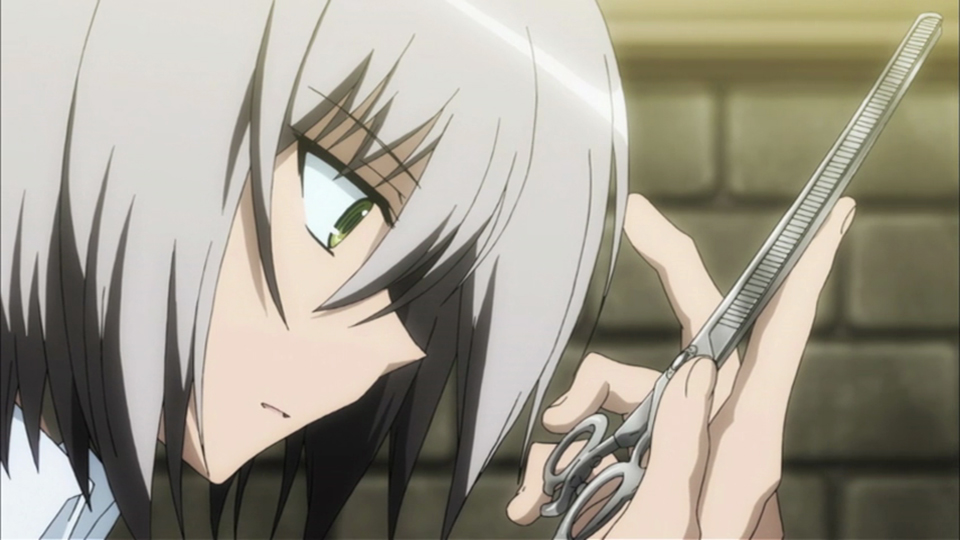Back when it was halfway through its run, I listed The Severing Crime Edge as one of the anime you could skip last season. But that wasn’t because it was bad per se.
Rather it was because while it was based on an interesting concept, the anime was doing little with it — a problem compounded by the show’s apparent identity problems.
Good — Fun, Diverse Characters in an Interesting World

The world of Crime Edge is a fascinating one where the souls of serial killers inhabit their murder weapons which then in turn possess members of their own bloodlines — turning generation upon generation into serial killers.
Thus many of the main characters are based on serial killer archetypes. One is possessed by an “angel of mercy” serial killer and thus feels the need to inject people and kill them. Another is possessed by a mad judge who uses the law to kill anyone he thinks is guilty of a crime.
The other members of the cast mostly fall into the category of being an “instead” — aka the person a serial killer pretends to kill in order to not actually be compelled to murder. The main character, Kiri, cuts the hair of Iwai instead of cutting up random people. The aforementioned “angel of mercy” character injects her sister with saline on a nightly basis to prevent her potential rampages.
And on top of all this is the legend of the hair queen (in this case Iwai) who, if killed by one of these serial killers, will grant a single wish to her killer. This, of course, provides the perfect excuse for killers to come out of the woodwork while Kiri tries to fight them all off (not needing a wish as he’s content with just cutting Iwai’s hair).
Mixed — Genre Dissonance

While it’s more than possible to blend multiple genres together, Crime Edge does less blending and more jumping erratically from genre to genre as it goes from one scene to the next. In one scene, it’s a comedy about a boy who has a hair-cutting fetish. Then, suddenly, it’s a violent death game filled with enough blood and gore to get Kill Bill-style black-and-white censoring. In the next scene, it’s a softcore moé love story between two middle schoolers who have found their soul mates.
Then it’s a Shonen-style fighting anime a la Dragon Ball or Bleach where the hero must reach an explosive new power level in order to win his current fight. And just when you think you have a handle on the genre, it jumps to another new one — like a psychological drama exploring what it’s like to be a person whose life has been hijacked in order to keep a crazed killer in check.
On one hand, it’s an anime that’s impressive in its ambition: not afraid to go wherever it wants in order to tell the story it wants to tell. But on the other hand, this gives the viewers a kind of tonal whiplash — never letting them get settled with what is going on or what will happen next.
Bad — It Just Kind of Ends

Crime Edge suffers from a problem common among anime based on ongoing manga or light novels: It just kind of ends. While there is a final fight scene, it seems no more weighty or important than any of the other fights in the series. There is no series climax, no major final action that ties together all that has come before. Thus, it is a work that really just seems to fall apart at the end.
Random Thoughts — “Kill Bill” Censoring

When Crime Edge gets violent, it gets really violent with lots of blood being sprayed about. But either as a stylistic choice or simply as part of network censorship, the animation fades to black and white a al Kill Bill right before these scenes begin.
The odd thing about this is that whenever it goes black and white, you know it’s about to get bloody, taking any suspense out of what is to come. It’s almost like having a scene spoiled for you right before you watch it. So while this effect is preferable to the usual screen-obscuring “white glare” censorship you get in most violent shows during their TV run, it really seems to mute the action along with the colours.
Final Thoughts

In the end, Severing Crime Edge is an average anime at best. While it is a series with a lot of mysteries to solve and lore to explore, it is an anime that tries to do too much in too many different ways and comes off a little schizophrenic — never quite sure what type of anime it wants to be. And without a good, solid ending to the series to wrap up the story arc, it comes off a bit unsatisfying.
Fans of death game anime or romance anime may find this series enjoyable for a casual watch, but on the whole, it’s largely forgettable.
The Severing Crime Edge aired on Tokyo MX in Japan and can be seen for free and with English subtitles on Crunchyroll.
Kotaku East is your slice of Asian internet culture, bringing you the latest talking points from Japan, Korea, China and beyond. Tune in every morning from 4am to 8am.
To contact the author of this post, write to BiggestinJapan@gmail.com or find him on Twitter @BiggestinJapan.

Comments
2 responses to “The Severing Crime Edge Is An Anime With Identity Issues”
Did a review on crime edge, didn’t mention loli once. That’s quite an accomplishment.
LAWL, haven’t watched it yet, does it make it awkward?
Not if you like Loli.